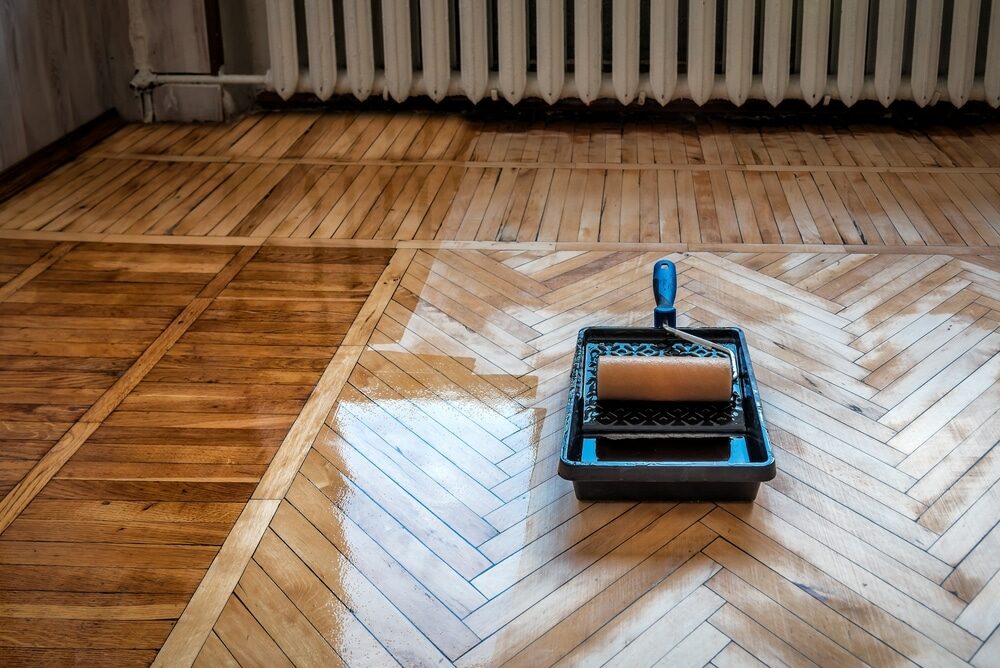
Parquet flooring is a timeless and elegant choice for homeowners who appreciate the beauty of hardwood. Its intricate patterns and rich history make it a popular flooring option for those seeking both durability and style. In this comprehensive guide, we will delve into everything you need to know about parquet flooring, from its history and types to installation and maintenance.
A Brief History of Parquet Flooring
Parquet flooring has a fascinating history that dates back to the 17th century in France. It was initially used in the Palace of Versailles, where it adorned the grand halls and chambers. The term “parquet” itself is derived from the Old French word “parchet,” which means “a small enclosed space.” Over the centuries, parquet flooring has evolved and become a symbol of luxury and craftsmanship.
Types of Parquet Flooring
There are several types of parquet flooring, each with its unique characteristics and patterns. Let’s explore the most common ones:
1. Herringbone Parquet
Herringbone parquet is one of the most iconic patterns, characterized by its diagonal arrangement of rectangular pieces. This pattern adds a touch of sophistication to any room and works exceptionally well in both traditional and contemporary settings.
2. Chevron Parquet
Chevron parquet features a V-shaped pattern, with planks meeting at a 45-degree angle. This design creates a striking visual effect and can make smaller spaces appear more expansive.
3. Basketweave Parquet
Basketweave parquet is characterized by the weaving of rectangular blocks to create a textured, woven appearance. This pattern adds depth and dimension to your flooring, making it a popular choice for living rooms and dining areas.
4. Versailles Parquet
The Versailles pattern is known for its intricate and ornate designs, often featuring intricate curves and geometric shapes. It is a true testament to the craftsmanship of parquet flooring and is often used in upscale homes and historic buildings.
Installation of Parquet Flooring
Installing parquet flooring requires precision and skill. While it’s possible to tackle this as a DIY project, it’s often best left to professionals who can ensure a flawless finish. Here are the key steps involved in the installation process:
1. Subfloor Preparation
Before installing parquet flooring, the subfloor must be clean, level, and dry. Any imperfections in the subfloor can affect the final result. Subfloor preparation may include the use of underlayment and moisture barriers.
2. Pattern Layout
The chosen parquet pattern is carefully laid out to ensure it fits the room dimensions and aligns correctly. This step is crucial to achieving the desired look and symmetry.
3. Adhesive Application
A high-quality adhesive is applied to the subfloor, and the parquet pieces are carefully pressed into place. The adhesive used should be suitable for the type of parquet being installed.
4. Sanding and Finishing
After the parquet is securely in place, sanding is done to create a smooth surface. The final step involves finishing the floor with a protective sealant or oil, enhancing both its appearance and durability.
Maintenance and Care
Parquet flooring, once installed, requires proper care to maintain its beauty and longevity. Here are some essential tips for maintaining your parquet floors:
1. Regular Cleaning
Dust and dirt can scratch the surface of your parquet flooring over time. To prevent this, sweep or vacuum regularly and use a damp mop with a mild wood floor cleaner when needed.
2. Avoid Excess Moisture
Excessive moisture can damage Parquet flooring. Be cautious when mopping, and promptly wipe up any spills. Use mats at entrances to trap moisture and dirt from outside.
3. Protect Against Furniture
Place felt pads on the legs of furniture to prevent scratches and dents when moving or rearranging items in the room.
4. Periodic Refinishing
Depending on the level of wear and tear, you may need to refinish your parquet floors every few years. This process involves sanding down the surface and applying a new finish to restore its original shine.
Conclusion
Parquet flooring is a beautiful and timeless choice for homeowners looking to add elegance and sophistication to their spaces. With its rich history, various patterns, and durability, it continues to be a popular flooring option. By understanding the types, installation process, and proper maintenance, you can unlock the true beauty of parquet flooring and enjoy its allure for many years to come.